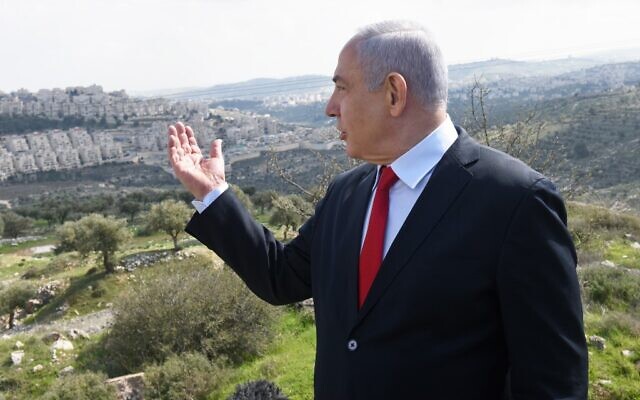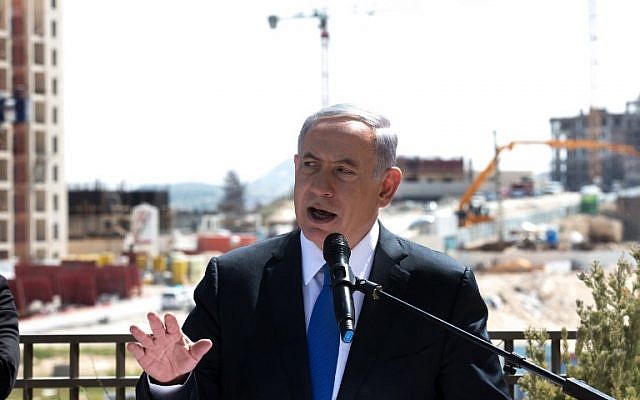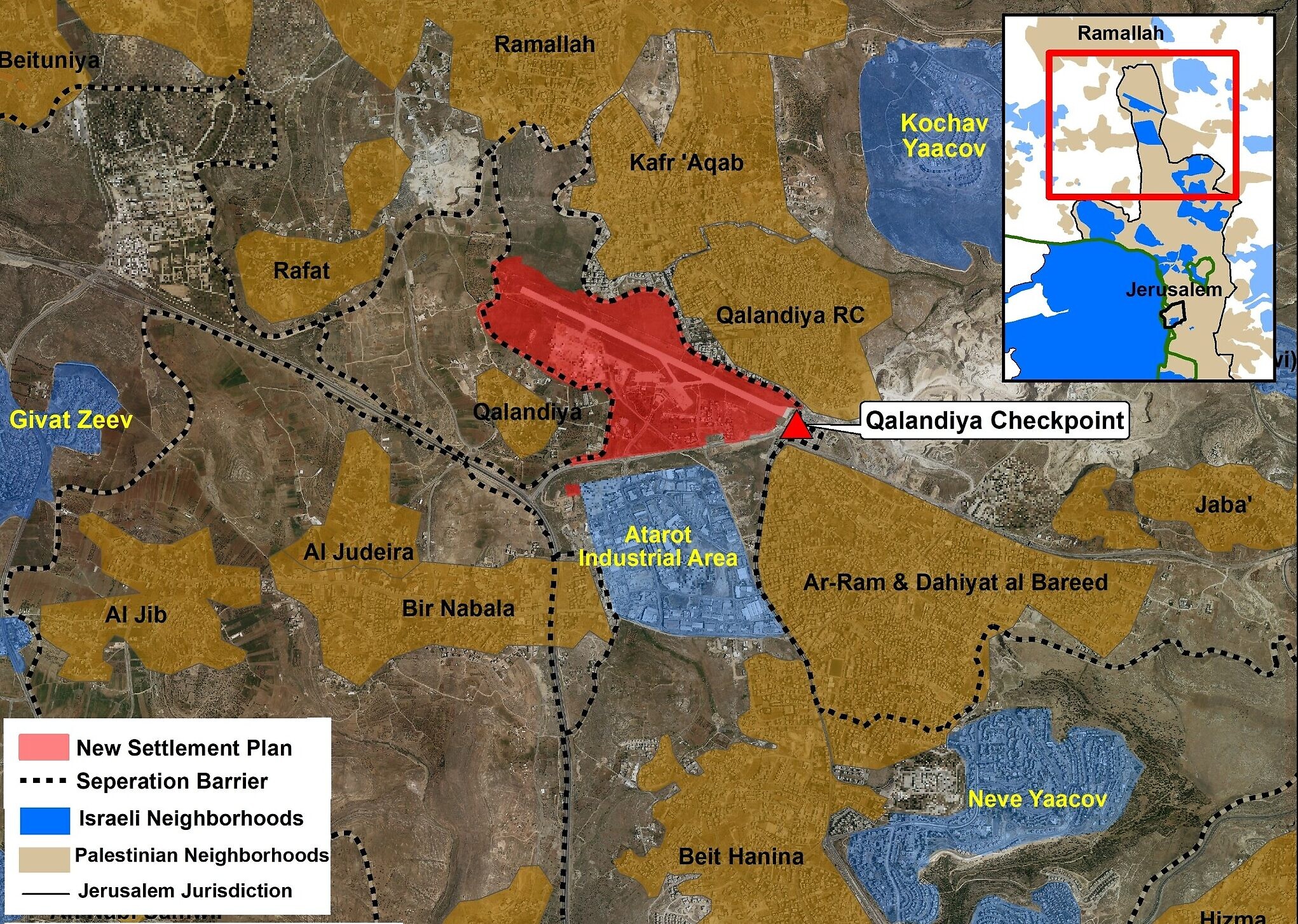11 days before election, Netanyahu announces approval for 3,000 homes for Jews in project that would cut off Palestinian areas in capital from West Bank

Prime Minister Benjamin Netanyahu announced on Thursday that he had lifted restrictions against the construction of the controversial Givat Hamatos neighborhood in East Jerusalem, saying that 3,000 homes would be built for Jewish residents there, in addition to another 2,200 housing units for Jews in the nearby Har Homa neighborhood.
The significance of Netanyahu’s approval was not immediately clear, given that the final authorization for construction in Givat Hamatos had been given by his office six years ago.
The plan for construction in Givat Hamatos was first brought forward in 2012, earning widespread condemnation in the international community over its cutting off of the Palestinian neighborhoods of Beit Safafa and Sharafat from the West Bank, in a manner that critics said placed a nail in the coffin of a two-state solution based roughly on the pre-1967 lines.
Thursday appeared to have been the first time Netanyahu publicly admitted to having placed a building freeze on the Givat Hamatos plan, explaining that he had been under immense pressure from countries abroad not to build there.
Addressing reporters in front of Har Homa along with Jerusalem Mayor Moshe Lion and Tourism Minister Yariv Levin, Netanyahu said that in addition to the 2,200 units he had signed off on for the neighborhood behind him and the 3,000 units for Givat Hamatos, he had also green-lit 1,000 homes for Palestinians in the neighborhood of Beit Safafa, which has long suffered from a housing crisis.
“Coexistence in Jerusalem,” he declared. “Jerusalem is being built and expanded. We are connecting all parts of the united Jerusalem. I have removed all the restrictions, and now Jerusalem is being built under my authority.”

Pointing to Har Homa, Netanyahu basked in having been prime minister when the first neighborhood there was built, saying he was proud to announce the establishment of its fifth neighborhood, “Har Homa E.”
The left-wing Peace Now organization responded to the announcement, saying it would prevent a contiguous future Palestinian state and calling it a “cynical election exercise” by the prime minister.
“This is the last point that can allow territorial contiguity between Bethlehem and East Jerusalem — the most significant Palestinian metropolitan area — and if the neighborhood is built, it will not be possible to connect the two cities,” the group said in a statement. “Such a policy change cannot be passed in a transitional government without a mandate from the public. This move is therefore but another cynical election exercise by Netanyahu to the detriment of the interests of all Israeli citizens.”
Moreover, Peace Now’s Hagit Ofran pointed out in a tweet that Netanyahu had inflated the numbers in his announcement while. The Givat Hamatos plan slated to be brought before the Jerusalem Planning and Building Committee next week consists of 2,610 homes, not 3,000 and the project in Beit Safafa is for 805 homes not 1,000.
The announcement from Netanyahu came less than two weeks after the Housing Ministry began advancing a plan to build a massive Jewish neighborhood in an East Jerusalem area that appears to be earmarked in the Trump administration’s peace plan for a Palestinian tourism center.
On February 9, the ministry submitted a building plan that would see some 9,000 housing units constructed at the site of the Atarot Airport, which has been inoperative since the breakout of the Second Intifada in 2000.
While the Trump plan does not specify where exactly in Atarot the Palestinian tourism center would be located, the airport is the only open area in the East Jerusalem neighborhood where such a site could be built.
The new neighborhood in Atarot would break a long stretch of Palestinian urban areas extending from the East Jerusalem neighborhoods of Beit Hanina and Shuafat north to Kfar Aqab, Qalandiya and Ramallah on the other side of the security barrier.

The project will still need to be authorized in several other planning stages that can take several years, but the submission of the building plan marks a significant step toward construction after several years of delays due to lack of funds.
The site designated for construction is mostly on state land but parts of the new neighborhood would sit on parcels currently privately owned by Palestinians, requiring the demolition of at least 15 families’ homes.
As reported by The Times of Israel
